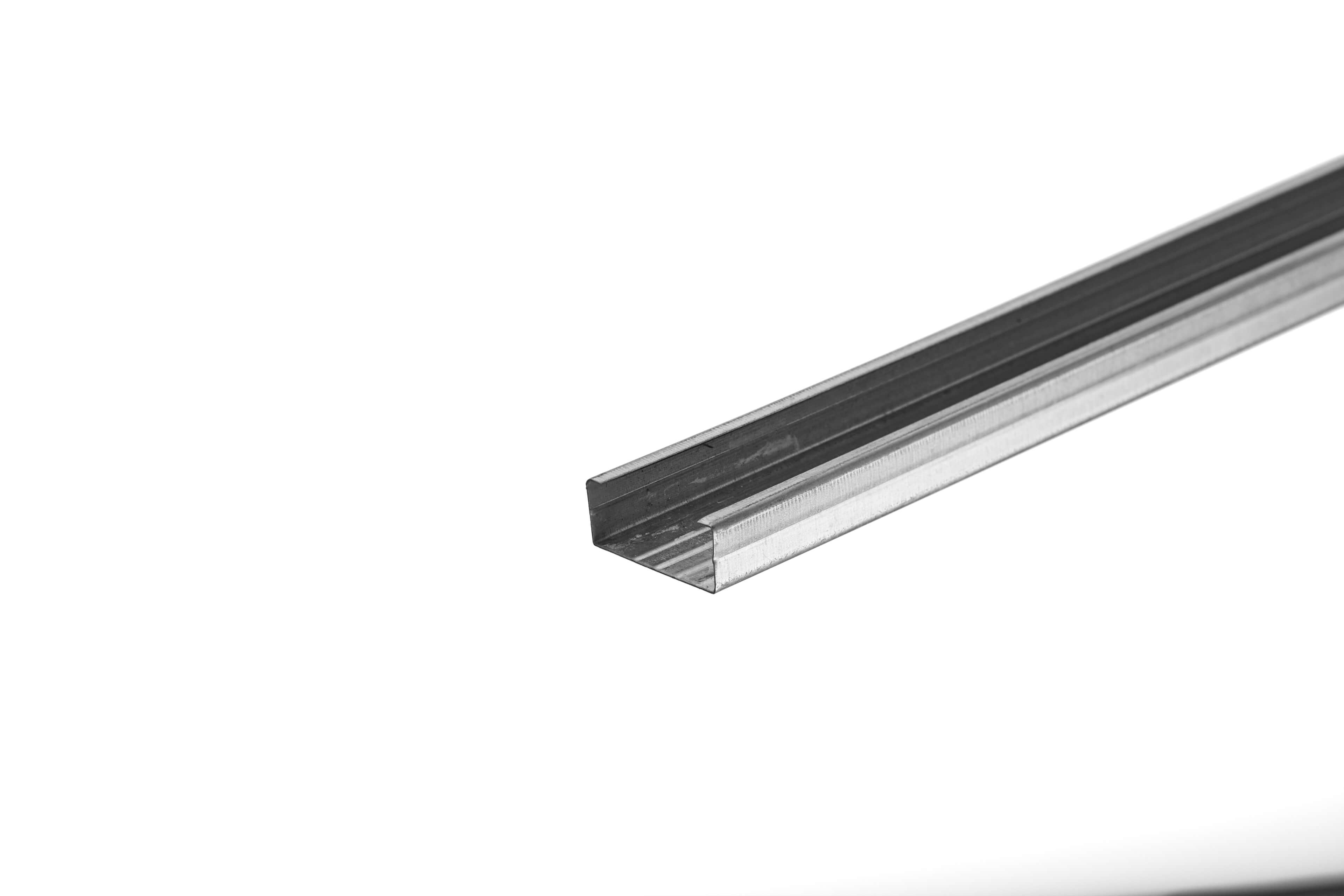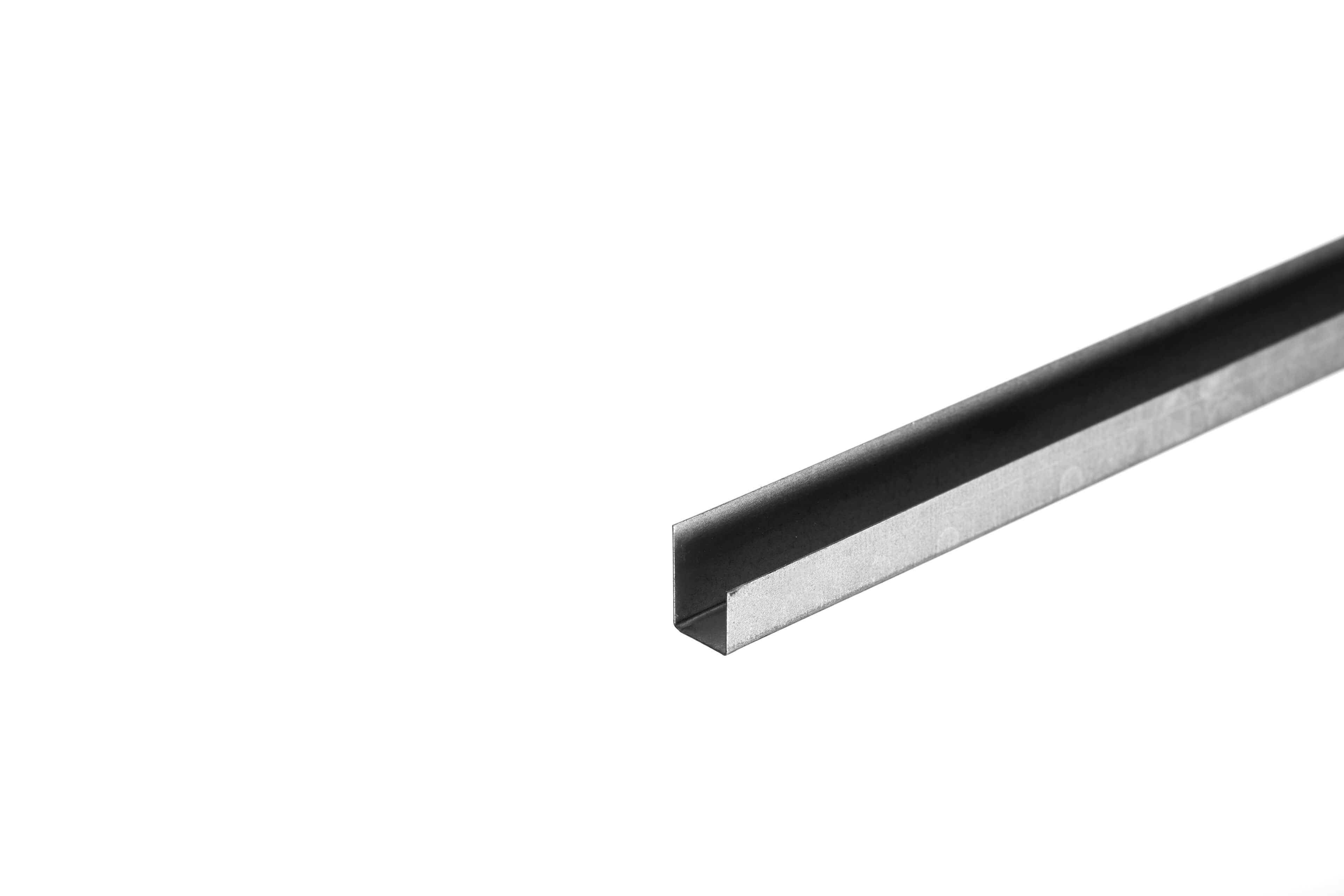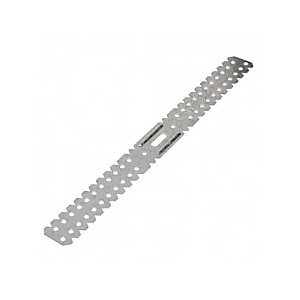Gypliner Wall System
(5 Products)In applications where background fixing is not possible, use the Gypliner Wall System; a cost-effective non-load-bearing metal wall lining system which provides a solution for uneven surfaces that cannot accept a bonded system. The Gypliner Wall System is made up of a range of components, namely the Liner Stud (GL1) and the Liner Track (GL8), which fit together using Liner Connectors (GL3) to form the frame.
What Is A Gypliner Wall System?
A Gypliner Wall System is an independent, lighter gauge metal frame drylining system for lining external walls where the external wall or substrate is uneven or out of plumb.
A Gypliner Wall System makes fixing plasterboard sheets onto existing old and uneven masonry walls easy, through the secure foundation offered by the metal lining channel.
Gypliner channel is purposed to ease the installation of plasterboard linings on:
- Masonry walls
- Concrete soffits
- Timber joists
- Encasement of steel columns and beams
Benefits of Using Gypliner Wall System
Essentially a Gypliner Wall System is a system which enables you to dryline existing walls that are out of plumb or uneven. The system is entirely independent which allows for a high degree of insulating space and also accounts for services.
A wall lining system's primary advantages lie in its convenience and speed; firstly, it eradicates the need to prepare the existing wall, saving you time and money on additional priming products.
It also creates a void which facilitates the installation of insulation and appropriate services, so everything is tucked away and accommodated spatially.
Let's explore the many benefits of Gypliner Wall Systems below:
- Enables you to create a firm and level surface to work upon
- Speedy and cost-effective method of dry lining an existing brick, block and concrete wall
- Removes surface irregularities within the external wall construction
- Allows for services and thermal and acoustic insulation within the framework
- Suitable for both domestic and commercial use
- Independent nature of framework reduces thermal bridging
- An ideal system for improving a wall’s acoustic and thermal performance
- Compatible with all types of plasterboard linings
- Steel construction is lighter than equivalent timber systems
The Components of A Gypliner Wall System
Similar to conventional partitioning systems, a Gypliner wall system consists of a traditional Stud and Track system. We sell cheaper alternative products to branded systems and accessories such as British Gypsum Gyplyner universal channels and Gypframe Gyplyner GL1 vertical support channels.
In terms of assembly, first, a Wall Lining Track (GL8) is secured to the floor and ceilings, and then Wall Liner Studs (GL1) are fitted between. Generally speaking, wall liner studs are secured at 600mm centres, but they can also be installed at 450mm centres to achieve more strength and rigidity.
Let's explore each component in detail:
Liner Stud (GL1)
GL1 Metal Liner Studs are robust internal framing profiles used in the construction of stud walls and combine with plasterboard linings to provide excellent acoustic performance and thermal performance.
These metal stud partitions should be utilised as uprights or studs.
Liner Track (GL8)
GL8 tracks fit together using Liner Connectors (GL3) to form the frame. GL8 Track is designed to aid in the installation of plasterboard linings on timber joists, concrete soffits, masonry walls, as well as for steel beams and columns encasement. Improving screw retention, GL8 is used as a framework for creating suspended ceilings or for lining brick walls.
Liner Connectors (GL3)
Lightweight C-shaped galvanized mild steel section installed vertically within a wall lining. This robust metal connector makes joining GL1 channels in gypliner wall systems simple. It allows you to create perfectly aligned and secure joints between adjacent sections of floor and ceiling channel by simply push-fitting the 43mm engineered metal connector into the joint.
Frequently Asked Gypliner Wall System Questions
How Do I Install A Gypliner Wall System?
- Firstly, Wall Lining Track (GL8) is secured to the floor and ceilings
- Then fit Wall Liner Studs (GL1) at 600mm centres - they can also be installed at 450mm centres to achieve more strength and rigidity
- Fixings Brackets should then be fixed to both the existing wall and vertical wall liner studs to offer higher strength capacity (we stock Long Leg Metal Liner Fixing Brackets (GL9)
- The position of services should be pre-established and installed in the frame erection stage
- Then install plasterboard lining by fixing to the floor and soffit
Please note that all system components, including the insulation, should remain independent of the external wall.
What Is The Difference Between Gypliner and GypLyner Wall Systems?
GypLyner is a branded wall system offered by British Gypsum, a well-known manufacturer of construction materials. This system is designed and manufactured by British Gypsum, providing a complete and integrated solution for wall construction and finishing.
On the other hand, Gypliner describes a wall system that is comprised of non-branded or generic components. In this case, Gypliner does not refer to a specific product or system offered by a particular manufacturer but rather suggests the use of various components from different sources to construct a wall system.
What Are The Benefits of Using Metal Over Timber?
Metal Studs have long been a popular cost-effective, economical solution for plasterboard partition walls (although they are suitable for use in a wide range of applications). The advantages of metal stud and track systems over traditional timber are numerous. Here are just a few examples to give you an idea:
- Strength - Metal is not as prone to warping or decaying as timber, nor is it susceptible to mould growth. While metal does rust, protecting the metal stud wall with a vapour barrier will ensure greater longevity.
- Fire resistance - Metal is a fire-resistant material whilst wood is extremely flammable. Metal stud partition walls constructed alongside fire-resistant plasterboard will provide greater levels of fire protection than conventional timber. (We stock internal wall lining systems such as fire-resistant plasterboard from the UK's three main manufacturers of fire-rated plasterboard; Knauf Drywall, British Gypsum and Siniat).
- Durability - Metal's strength does not deteriorate with time, unlike timber, allowing a structure to upkeep an efficient, long-term structural integrity.
- Pest resistance – metal requires no treatment to ensure its protection from termites and other insects.








